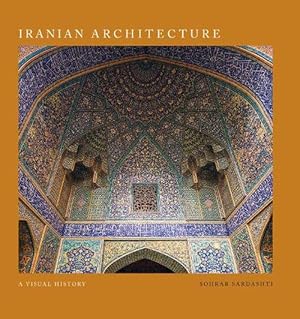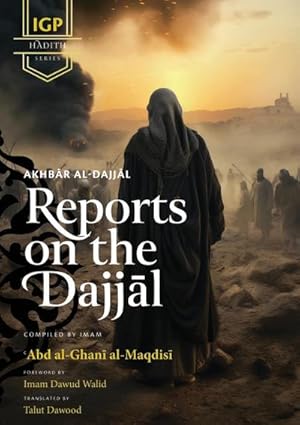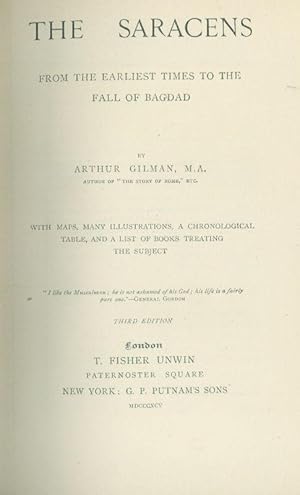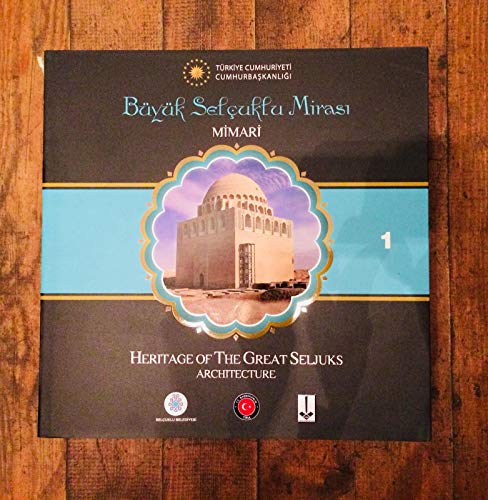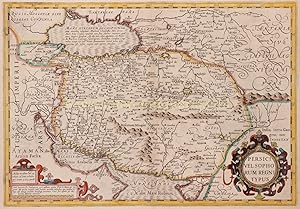Great Mosque of Isfahan (32 results)
Product Type
- All Product Types
- Books (31)
- Magazines & Periodicals
- Comics
- Sheet Music
- Art, Prints & Posters (1)
- Photographs
- Maps
-
Manuscripts &
Paper Collectibles
Condition
Binding
Collectible Attributes
Free Shipping
Seller Location
Seller Rating
-
Splendor Of The Gods
Published by Boston : HBJ Press, 1978
ISBN 10: 0150037279ISBN 13: 9780150037279
Seller: Library House Internet Sales, Grand Rapids, OH, U.S.A.
Book
Hardcover. Condition: As New. Dust Jacket Condition: As New. Presents religious edifices known for their great architecture and includes Cathedral of Milan, Cathedral of Mexico City, Mosque of the Shah at Isfahan, Horyuji Temple, Kandariya Mahadeva of Khadjuraho, India Cathedral of Chartres, Westminster Abbey, and St. Stephen's Cathedral. Please note the image in this listing is a stock photo and may not match the covers of the actual item. Book.
More buying choices from other sellers on AbeBooks
Used offers from US$ 10.00
Also find First Edition
-
FROM AN ANTIQUE LAND: Ancient And Modern In The Middle East. 66 Photographs By The Author, Including 27 In Full Color
Published by NY. 1954. Crown Publishers / A Chantecleer Edition, 1954
Seller: Chris Fessler, Bookseller, Howell, MI, U.S.A.
First Edition
blue & gilt (spine bands) full cloth hardcover 8vo. (octavo). dustwrapper in protective plastic book jacket cover. vg cond. binding square & tight. corners rubbed. covers clean. top edge a little dust darkened, other edges clean. contents free of markings. price clipped dustwrapper in good cond. large scratchy spot on front from old label, missing 1"x6" piece along top of rear panel. nice clean copy. no library markings, store stamps, stickers, bookplates, no names, inking, underlining, remainder markings etc~. first edition. first printing (FPu1954 & nap). 310p. 3 b&w maps. 27 gloss full color full page photos. 29 b&w photos. index. world history. middle east history. archaeology. ~ 'IT IS ONE OF THE DUTIES AND PRIVILEGES OF MAN' says Julian Huxley, 'to testify to his experience, to bear witness to the wonder and variety of the world in which he finds himself. I had the fortunate experience of being plunged into the Middle East and its history; and in this book I have tried to give my personal testimony of the impression which that experience made upon me.' 'The Middle East gives a unique picture of the growth of civilization, from its earliest origins up to the present. Ur and Babylon, Nineveh and Persepolis, Isfahan and Shiraz, Baghdad and Ctesiphon, Petra and Palmyra, Baalbek and Byblos, Damascus and Aleppo, Sidon and Tripoli, Jerash and Dura, Ras Shamra and Qalat Seman, fortresses and castles of every period ~ what a list ! And this includes nothing from Egypt or Turkey: if they too are brought in [ as they are in this book], the wealth of wonders becomes prodigious.' Wherever he went he found something to fascinate or intrigue his restlessly enquiring mind; his scientific knowledge and training give sharpness and an unusual quality to his impressions. He saw 'the overpowering physical spectacle' of the Bekaa Valley, and speculated on its connection with the Great Rift Valley in Africa. He discussed education and the place of women with King Abdullah (' a man caught between two worlds, the modern world of armed technology and the world of the desert and Arabian Islam'). He visited the gigantic ruins of ancient tombs and temples, and considered the fantastic conglomeration of gods and goddesses ~ Baal, Osiris, Ashtaroth, Moloch and hundreds more ~ whose worship was founded on slavery and sacrifice and is now forgotten as the dust. Under his pen the Middle East is populated again with the flourishing empires of four thousand years, dark, bizarre and hostile, rich both in splendour and horror. Everywhere he took photographs, and the best of them ~ 27 in colour and 39 in black and white ~ are an integral part of this book. 'Colour is essential', says Dr Huxley, 'to capture much of the Middle East scene', and when we see the sandstone tombs of Petra 'like a gorgeous, barbaric piece of watered silk', the blue mosques of Isfahan or the triumphal arch at Palmyra, serene against a hot blue sky, our understanding is enriched. Why did this huge area, once so prosperous, the womb from which civilization emerged, relapse into desert and struggling poverty? Can the new nation~states of the Middle East reemerge to take their places in the modem world? In attempting to find the answer to these questions, this beautiful and many~sided book takes the reader on a fascinating journey through time and space, and offers a new and stimulating view of the history of man.
-
The Great Mosque of Isfahan (HAGOP KEVORKIAN SERIES ON NEAR EASTERN ART AND CIVILIZATION)
Published by New York University Press, 1990
ISBN 10: 0814730272ISBN 13: 9780814730270
Seller: Books From California, Simi Valley, CA, U.S.A.
Book
hardcover. Condition: Very Good.
More buying choices from other sellers on AbeBooks
Used offers from US$ 19.36
-
The Cambridge Encyclopedia of the Middle East & North Africa
Published by Cambridge University Press, 1988
ISBN 10: 0521321905ISBN 13: 9780521321907
Seller: zenosbooks, San Francisco, CA, U.S.A.
Book
hardcover. Condition: Very Good in Dustjacket. Cambridge. 1988. Cambridge University Press. Very Good in Dustjacket. 0521321905. 504 pages. hardcover. Front jacket photograph: The Old City of Jerusalem and Dome of the Rock (Alistair Duncan). Back jacket photographs: Jewish children at the Western Wall, Old Jerusalem (Alistair Duncan); Omani women at the camel races (David Chappdll); The Lion Gate, Boghaz Kol, Turkey (Margaret Drower); Lutfullah Mosque, Isfahan, Iran (Anthony Hutt); Jeddah, Saudi Arabia (Trevor Mostyn); The Riafa Gate, Fez, Morocco (R. Turpin). keywords: Middle East Reference History. FROM THE PUBLISHER - The media image of the Middle East today is often that of sudden oil wealth, war and international terrorism, a sad contrast with the image that obsessed the nineteenth-century European writers and artists and an even sadder one when compared with that of the intense cultural energy that has characterized this vast region for millennia. The Cambridge Encyclopedia of the Middle East and North Africa analyses the region from its pre-Islamic period to the present day, from its golden ages to the contemporary era when it is struggling to retain its roots as it copes with regional conflicts and the penetration of modern technology. Academics and journalists who are international experts in their individual fields are gathered in this one volume to study the region in great depth and with perceptive and often colourful insights. The cultural influences of the three great monotheistic faiths born in the Region - Judaism, Christianity and Islam - are covered through all their main aspects such as history, the sciences and the arts. Although Islam has clearly had the greatest influence on the region, the early religions and Judaism and Christianity are thoroughly studied by specialist writers. So, too, are minority sects such as the Zoroastrians and the Druze and ethnic minority groups such as Berbers, Kurds and Pushtuns. The Middle East and North Africa, a region that spreads from Morocco in the west to Afghanistan in the east, Turkey in the north to Somalia and Djibouti in the south, contains many races and many religious groups and sub-groups. inventory #10823.
-
Portrait of Islam : a journey through the Muslim World / by Robin Laurance ; introduction by Robin Ostle
Published by New York, N. Y. : Thames & Hudson, 2002
ISBN 10: 0500510989ISBN 13: 9780500510988
Seller: MW Books, New York, NY, U.S.A.
Book First Edition
First Edition. An exceptional copy; fine in an equally fine dw, now mylar-sleeved. Particularly and surprisingly well-preserved; tight, bright, clean and especially sharp-cornered. Literally as new.; 168 pages; Description: 168 p. : col. ill. ; 29 cm. Subjects: Islamic countries --Pictorial works. Summary: From Africa's Atlantic shore, through North Africa, the Middle East, Central, South, and Southeast Asia, to the far-flung Pacific islands of Indonesia, the Islamic world extends over a vast portion of the globe, embracing approximately one-fifth of the planet's population. Yet, despite the presence of substantial Muslim communities in North America and Europe, the Islamic peoples -- their lands, history, culture, art, and faith -- remain largely unknown, ignored, or misunderstood by much of the Western world. The wonderful photographs taken by Robin Laurance on his journey through the heart of Islam will do much to dispel such ignorance of the realities of Islam, its extraordinary achievements, and everyday existence. Here are the Bedouin of Oman's deserts and the stockbrokers of Kuwait; the dancers of the Turkish State Ballet and the shadow puppeteers of Java; a group of Friday worshipers in Kuala Lumpur and a solitary but equally faithful roadside worshiper in Saudi Arabia; the privileged blue-turbaned young men of Lahore's leading private school and the less privileged students of the Koran at a hidden madrasa in Karachi. The architecture shows equally striking contrasts in the grand mosques of Isfahan and Istanbul, the tiny private mosques of Indonesia and Kuwait, and the desert mosques of Arabia. While the high-rise plate-glass structures of the rich Gulf States reflect a newfound wealth, the extraordinary laval cone homes of central Anatolia mirror the ingenuity of a bygone age. Robin Ostle of Oxford University has written a valuable introduction, explaining the historical background and principles of Islam; the tenets of the faith; its place in law, state, and society; andits relation to the other two great monotheistic religions -- Judaism and Christianity -- with which it shares so many values. 1 Kg.
More buying choices from other sellers on AbeBooks
Used offers from US$ 27.94
Also find First Edition
-
Oriental Manuscripts and Miniatures. [ Sotheby's, auction catalogue, sale date: 26 April, 1990 ].
Published by Sotheby's, London, auction catalogue for the sale held on 26th April, 1990, 1990
First Edition
Laminated illustrated wrappers, 4to, 27 cm, 158 pp, plates (some colour), ills. 239 lots. Among the highlights noted were the following: Indian miniatures from the 16th century to the 20th century including a miniature depicting the wedding procession of Sultan Abdullah Qutb Shah of Golconda, the Deccan, c.1630; an illustrated leaf depicting Bahram Gur watching a girl milking a cow, attributed to Shaykh Abbasi or his sons, Persia or the Deccan, third quarter of the seventeenth Century; a miniature depicting a prince and his mistress in a Chamber of mirrors, Kangra, c. 1800-1810; a watercolour depicting a marriage procession attributablc to Sewak Ram, Patna, c.1810; a painting of two nautch girls dancing the 'Kuharwa', Lucknow, c.1780; a large painting of the durbar of Nawab Bahawal Khan of Bahawalpur, signed by Muhammad and Karim Bakhsh, Bahawalpur dated 1851; Persian and Turkish miniatures from the 15th century to the 20th century including a miniature depicting a caparisoned camel signed by Habib, Isfahan, c.1600; Calligraphy, illumination and firmans from the 14th century to the 20th century; Qur'ans and Qur'an leaves from the 9th century to the 19th century including an illuminated Qur'an leaf in eastern kufic, Persia, c.993; a vellum Qur'an leaf in kufic in gold, the Great Mosque, Qairawan, tenth century; an illuminated Qur'an signed by Hamdullah, Ottoman, c. 1515; Arabic, Persian and Turkish manuscripts from the 13th century to the 19th century including a vellum manuscript of al-Imam Malik ibn Anas' Muwatta, Andalusia dated 1353; a manuscript of Qazwini's Aja'ib al-Makhluqat with fifty-nine illustrations, late Ayyubid, probably Syria, third quarter of thirteenth century; an illuminated manuscript of Rumi's Masnavi, probably Anatolia dated 1395; an illustrated manuscript of Fuzuli's Hadiqat al-Su'ada', Ottoman dated 1599. Wrappers a little marked, scribbled notes to title-page, rear endpapers and some lots, otherwise Near Very Good.
-
Oriental Manuscripts and Miniatures. [ Sotheby's, auction catalogue, sale date: 11 April, 1988 ].
Published by Sotheby's, London, auction catalogue for the sale held on 11th April, 1988, 1988
First Edition
Printed wrappers, 4to, 44 pp, 33 plates (including 13 in colour), ills. 148 lots. Among the highlights noted were the following: Indian miniatures from the 16th to the 19th century including a miniature depicting the descent from the Cross, Mughal, c 1610; a miniature depicting the Mughal Emperor Shah Alam II enthroned on a terrace, attributed to Dip Chand, Patna, c. 1764; a miniature depicting a nobleman seated on a terrace of a water-garden, signed in two places by Nidha Mai, Mughal, c.1750; a miniature depicting Sultan Abdullah Qutb Shah of Golconda leading a procession across a hillside, Golconda, mid-seventeenth century; three illustrations from the Shangri Ramayana, Kulu, c. 1700-1710; Persian and Turkish miniatures from the 15th to the 20th century including two illustrated leaves from a manuscript of the Khawaran Noma, Commercial Turkman, probably Shiraz, 1477; an album containing fifty-five drawings of flowers and plants, three drawings signed by Shafi' Abbas, Isfahan, dated between 1633-1674; Qur'ans and Qur'an leaves from the 9th to the 19th century including a vellum Qur'an leaf in kufic in gold, the Great Mosque, Qairawan, tenth century; a Qur'an section (Juz XXII) written in eastern kufic, Persia, twelfth century; Arabic and Persian manuscripts from the 15th to the 19th century including a manuscript of Firdausi's Shahnama with forty-one miniatures, Bukhara, c.1600. Top edge mildly duststained, otherwise Very Good. List of prices realized and buyers' names laid in.
-
Oriental Manuscripts and Miniatures. [ Sotheby's, auction catalogue, sale date: 26 April, 1990 ].
Published by Sotheby's, London, auction catalogue for the sale held on 26th April, 1990, 1990
First Edition
Laminated illustrated wrappers, 4to, 27 cm, 158 pp, plates (some colour), ills. 239 lots. Among the highlights noted were the following: Indian miniatures from the 16th century to the 20th century including a miniature depicting the wedding procession of Sultan Abdullah Qutb Shah of Golconda, the Deccan, c.1630; an illustrated leaf depicting Bahram Gur watching a girl milking a cow, attributed to Shaykh Abbasi or his sons, Persia or the Deccan, third quarter of the seventeenth Century; a miniature depicting a prince and his mistress in a Chamber of mirrors, Kangra, c. 1800-1810; a watercolour depicting a marriage procession attributablc to Sewak Ram, Patna, c.1810; a painting of two nautch girls dancing the 'Kuharwa', Lucknow, c.1780; a large painting of the durbar of Nawab Bahawal Khan of Bahawalpur, signed by Muhammad and Karim Bakhsh, Bahawalpur dated 1851; Persian and Turkish miniatures from the 15th century to the 20th century including a miniature depicting a caparisoned camel signed by Habib, Isfahan, c.1600; Calligraphy, illumination and firmans from the 14th century to the 20th century; Qur'ans and Qur'an leaves from the 9th century to the 19th century including an illuminated Qur'an leaf in eastern kufic, Persia, c.993; a vellum Qur'an leaf in kufic in gold, the Great Mosque, Qairawan, tenth century; an illuminated Qur'an signed by Hamdullah, Ottoman, c. 1515; Arabic, Persian and Turkish manuscripts from the 13th century to the 19th century including a vellum manuscript of al-Imam Malik ibn Anas' Muwatta, Andalusia dated 1353; a manuscript of Qazwini's Aja'ib al-Makhluqat with fifty-nine illustrations, late Ayyubid, probably Syria, third quarter of thirteenth century; an illuminated manuscript of Rumi's Masnavi, probably Anatolia dated 1395; an illustrated manuscript of Fuzuli's Hadiqat al-Su'ada', Ottoman dated 1599. Near Fine.
-
Great Mosque of Isfahan
Published by I B Tauris & Co Ltd, 1990
ISBN 10: 185043185XISBN 13: 9781850431855
Seller: Better World Books Ltd, Dunfermline, United Kingdom
Book
Condition: Very Good. Ships from the UK. Former library book; may include library markings. Used book that is in excellent condition. May show signs of wear or have minor defects.
More buying choices from other sellers on AbeBooks
Used offers from US$ 35.85
Also find First Edition
-
The Great Mosque of Isfahan. [Mit 52 Schwarzweiß-Abbildungen & Skizzen im Text.] [mit Umschlag]
Seller: Antiquariat Lorang, Bamberg, BY, Germany
I. B. Tauris Publishers, London, 1990. Graublaue Original-Leinwand, weißer Original-Schutzumschlag, X, 141 Seiten, Lex.8° (27,5 x 21 x 2 cm). Text in ENGLISCHER Sprache. Einband mit minimalen Gebrauchsspuren, leicht nachgedunkelt und geringfügig lichtrandig, Einband mit angedeuteten Gebrauchsspuren, Papier andeutungsweise gebräunt, Buchblock sauber (also ohne Unterstreichungen & Randglossen). Sehr schönes Exemplar. [SW: Architektur] [INTERNER HINWEIS - STANDORT 2. Raum, Sonderbestand Archäologie-Alphabet].
-
Iranian Architecture (Hardcover)
Published by ACC Art Books, Woodbridge, 2023
ISBN 10: 1788841840ISBN 13: 9781788841849
Seller: Grand Eagle Retail, Wilmington, DE, U.S.A.
Book
Hardcover. Condition: new. Hardcover. Iran, the former Persia, lies at an interface between West-East and North-South. Several early trade routes crossed the country, connecting Asia, Africa and Europe, and the cultural wealth and scenic beauty of this region has attracted travellers for over 2,000 years. This rich past makes Iran one of the most culturally interesting countries of Asia. The art of building has a special significance here. In contrast to other fields of knowledge, visual communication is particularly important in architecture. Much cannot be fully described; it must be made visible. In his book, Sohrab Sardashti immerses us in the dreamlike world of Iranian architecture. At the beginning of the book, the history of Iranian architecture is briefly described. Then an impressive variety of buildings is presented, divided according to their different functions. Mosques, tombs, madrassas, hammams, castles, palaces and more are all covered. The text at the beginning of each chapter briefly explains the nature and history of that type of building, followed by a series of examples with a short text on each, and an abundance of photos taken especially for this book. The book allows one to experience the great diversity and fascination of Iranian architecture and is a visual treat for the reader. AUTHOR: Sohrab Sardashti is a photographer and documenter of architecture and nature. He holds a PhD in Islamic Architecture from Isfahan Art University in Iran. SELLING POINTS: . A magnificent pictorial survey of the great architectural monuments of Iran . Hundreds of spectacular photos taken especially for this book, plus plans and elevations of key monuments . An important visual resource for students and architects and a visual treat for the casual reader 778 colour, 107 b/w illustrations This fully illustrated publication is a magnificent pictorial survey of the great architectural monuments of Iran. Shipping may be from multiple locations in the US or from the UK, depending on stock availability.
More buying choices from other sellers on AbeBooks
New offers from US$ 70.49
-
Reports on the Dajjal (Akhbar al-Dajjal)
Published by Imam Ghazali Publishing, 2023
ISBN 10: 1088188842ISBN 13: 9781088188842
Seller: AHA-BUCH GmbH, Einbeck, Germany
Book Print on Demand
Taschenbuch. Condition: Neu. nach der Bestellung gedruckt Neuware - Printed after ordering - Hafiz 'Abd al-Ghani ibn 'Abd al-Wahid al-Maqdisi's Reports on the Dajjal (Akhbar al-Dajjal) is a collection of Prophetic narrations that mention the Dajjal, known in English as the Antichrist.The subject of the Dajjal, the Antichrist, is one which generates much speculation, which in turn often leads to confusion. It is hoped that publication of this collection will help to clarify the most important issues related to this matter, and help us to draw lessons that are useful and applicable to our own lives. In turn, this clearer understanding may help us to warn those who are close to us about the great trial of the Dajjal and its dangers, and to take steps to protect our own faith and that of our loved ones.The majority of this text consists of the hadith themselves, which are given with their full chain of narrators. Citations to the source of each hadith in the major collections are included in the footnotes; where a narration is present in more than one of the major collections, all citations are included. The text also includes light commentary from both the author and translator when appropriate, regarding the hadith itself, its narrators, the strength of its chain, and other points.This edition includes Arabic text with full vowels, as well as the English translation.About the AuthorHafiz 'Abd al-Ghani al-Maqdisi was originally from the Jamma'il district of Nablus. His origin (al-Maqdisi) is ascribed to Jerusalem, as Nablus and all its districts are considered part of the jurisdiction of Jerusalem. He was most likely born in the month of Rabi' al-Akhir in the year 541 AH/1146 CE. At an early age, his family moved from Jerusalem to the area of the Ab¿ Salih Mosque just outside the eastern gate of Damascus. Then, they moved again to the foot of Mount Qasioun. There, they built an estate, calling it Dar al-Hanabilah (the Abode of the ¿anbalis).The Hafiz had a pious upbringing in Damascus. He began studying and traveling for knowledge, and heard hadiths as well as most of the books from the majority of scholars in Damascus, Alexandria, Jerusalem, Egypt, Baghdad, Harran, Mosul, Isfahan, and Hamadan. His inclination in scholarship was towards hadith.The Sheikh was known for his worship and his generosity. He was also generous and kind to the students of knowledge. He was of keen intellect and insight and had a light on his face. He used all his time in beneficial matters and did not waste a moment. Some of the scholars said, 'No one among Ahl al-Sunnah saw him except that he fell in love with him.'Hafiz al-Maqdisi passed away in Cairo in the month of Rab¿¿ al-Awwal in the year 600 AH. He was just under sixty years old. He was buried in the Qarafah graveyard in Egypt.
-
The Great Mosque of Isfahan
Published by London I B Tauris & Co Ltd, 1990
Seller: David Ford Books PBFA, Cley-next-the-Sea, United Kingdom
Association Member: PBFA
First Edition
Fine. Hardcover, first edition, 141 pages in dustjacket. Illustrated. the story of Iran's great Mosque, with plans drawings and photographs. A Fine book in a near Fine dustjacket. Slight spotting to top closed page edges. Pictures available.
-
Geometric Motifs During Safavid Era: Annotation Of Geometric Motifs During Safavid Era in Iran by research on Isfahan buildings;Aliqapu palace & Shah mosque
Published by LAP LAMBERT Academic Publishing, 2011
ISBN 10: 3844330348ISBN 13: 9783844330342
Seller: Book Deals, Tucson, AZ, U.S.A.
Book
Condition: Fine. Like New condition. Great condition, but not exactly fully crisp. The book may have been opened and read, but there are no defects to the book, jacket or pages.
-
Age of the Seljuqs (Hardcover)
Published by Bloomsbury Publishing Plc, London, 2014
ISBN 10: 1780769474ISBN 13: 9781780769479
Seller: Grand Eagle Retail, Wilmington, DE, U.S.A.
Book
Hardcover. Condition: new. Hardcover. From their ancestral heartland by the shores of the Aral Sea, the medieval Oghuz Turks marched westwards in search of dominion. Their conquests led to control of a Muslim empire that united the territories of the Eastern Islamic world, melded Turkic and Persian influences and transported Persian culture to Anatolia. In the eleventh and twelfth centuries the new Turkic-Persian symbiosis that had earlier emerged under the Samanids, Ghaznavids and Qarakha-nids came to fruition in a period that, under the enlightened rule of the Seljuq dynasty, combined imperial grandeur with remarkable artistic achievement. This latest volume in The Idea of Iran series focuses on a system of government based on Turkic 'men of the sword' and Persian 'men of the pen' that the Seljuqs (famous foes of the Crusader Frankish knights) consolidated in a form that endured for centuries. The book further explores key topics relating to the innovative Seljuq era, including: conflicted Sunni-Shi'a relations between the Sunni Seljuq Empire and Ismaili Fatimid caliphate; architecture, art and culture; and politics and poetry.Istvan Vasary looks back in Chapter 1 to the early history of the Turks in the wider Iranian world, discussing the debates about the dating and distribution of the early Turkish presence in Central Asia, Iran and Afghanistan. NizaAZm al-Mulk is the subject of Chapter 2, in which Carole Hillenbrand subjects this 'maverick vizier' to critical scrutiny. While paying due credit to his extraordinary achievements, she does not shy away from concluding that his career illustrates the maxim that 'power corrupts and absolute power corrupts absolutely'. A fitting antagonist for NizaAZm al-Mulk is the subject of Chapter 3, in which Farhad Daftary follows the career of the remarkable revolutionary leader Hasan-i SabbaAZh and the history of the Ismaili state-within-a-state that he founded with his capture of the fortress of Alamt in 1090. In Chapter 4 David Durand-Guedy examines the Seljuq Empire from the viewpoint of its (western) capital, Isfahan. He concentrates on the distinction between the parts of Iran to the west of the great deserts (and in close connection to Iraq and Baghdad) and the parts to the east, notably Khorasan, with its ties to Transoxiana and Tokharestan.Vanessa Van Renterghem in Chapter 5 challenges the long-held view that the Seljuq takeover of Baghdad represented a liberation of the Abbasid caliphs from their burden-some subordination to the heretical Buyids. Alexey Khismatulin in Chapter 6 presents a forensic examination of two important works of literature, casting doubt on the authorship of both the Siyar al-muluAZk attributed to NizaAZm al-Mulk and the NasAZhat al-muluAZk ascribed to al-GhazaAZlAZ. In Chapter 7 Asghar Seyed-Gohrab discusses the poetry of the Ghaznavid and Seljuq periods, demonstrating the poets' mastery of metaphor and of extended description and riddling to build suspense. The final chapter by Robert Hillenbrand shifts the focus from texts and literature to architecture and to that pre-eminent Seljuq masterpiece, the Friday Mosque of Isfaha The book further explores key topics relating to the innovative Seljuq era, including: conflicted Sunni-Shi'a relations between the Sunni Seljuq empire and Ismaili Fatimid caliphate; art, culture and ceramics; and poetry and architecture. Shipping may be from multiple locations in the US or from the UK, depending on stock availability.
-
The Saracens - From the Earliest Times to the Fall of Bagdad. With maps, many illustrations, a chronological table and a list of books treating the subject.
Published by Great Britain, T. Fisher Unwin., 1895
Seller: Inanna Rare Books Ltd., Skibbereen, CORK, Ireland
Book
Rare and sought after Third Edition. 14 x 21 cm. xiv, 493 pages. Maps and Illustrations. Original Hardcover. Cloth covered boards with gilt lettering on spine. Very good condition with only minor signs of external wear. The illustrations and maps include: View of Mecca in the seventeenth Century (from Müller's "Islam") / Ruins of Feiran, showing two Wadies / Mount Hor on the Route from Arabia to Paletsine / The Mosque at Mecca / View in Petra on the Route from Arabia to Palestine /Tomb of Fatima at Damascus / Bedawin Women from Baalbek / The Kaaba / Interior of the Mosque of Oman at Jerusalem / The Mosque of Omar at Jerusalem / Arabian Weapons of different Periods / Arabian Women, Water-Carriers / A Pilgrim Encampment near Medina / View in Medina / Mohammed /Seals of the early Kalifs Abu Bekr, Omar, Othman, Ali / Map of Damascus and the region around / Voew of a portion of the walls of Jerusalem / Interior of the mosque of Amr at Cairo / A Mosque at Isfahan / Genealogical Line of the Kalifs from Abu Bekr to Radi / A yound syrian Girl / Interior of the Mosque at Ispahan / Ancient Mosque of Kairwan / View of Tunis / View of the Mosque of Hasan at Cairo / Coins of the early Kalifs / Enclosure of teh Mosque of Omar at Jerusalem / An Algerian Berber / Plain of the Tombs and Mosque of Mehemet Ali at Cairo / Court of the Great Mosque of Damascus / Coin of Mehdi / Water-Merchants of Cairo / Coin of the Kalif Mamun / A suburb of Damascus / An arabian encampment / General View of Cairo / Map of Constantinople and the regions about / View of a Mosque at Bagdad / Coin of the Kalif Radi / Gold Coins of the Fatimite Kalifs, 1050 and 1072 A.D. / Arabian bread-sellers at Jerusalem / Walls of Damascus / Includes for example the following chapters: The Camel-Driver of the Desert, The Month Ramadan, Islam, Jerusalem Captured, Palestine and Mesopotamia Conquered, By Bagdad's Shrines. Sprache: english.
-
Condition: Very Good. 9 collotype plates of buildings of Isfahan, Small 8vo, 170 x 114mm. pages crisp, folding into the original green wrappers, some creasing and sunning to the margins. pp. 30 [9], Isfahan, Imp. Hablolmatin. [c.1950]. A beautiful booklet, written at the end of WWII to act as a guide and souvenir to the .Ógreat number of English speaking peoples visiting Isfahan.Ó (preface). The guide covers a short history of Iran and Isfahan, Masjid Jameh, Masjid-i-Shah (The KingÕs mosque), Masjid-i-Sheikh Lotfollah, Ali Qapu the Great Gate, Chehelsetoon and the Maraseh Ghahar Bagh Theological School. Rare Institutionally. Whilst Library Hub doesnÕt locate this edition, it does locate just 9 copies of the later 1955 edition and 5 copies of a 1957 edition. Whilst 10 plates are listed in the guide, this is a numerical printing error and has been cross-referenced against another copy. English. Book.
-
Heritage of the Great Seljuks. Architecture.= Büyük Selçuklu mirasi. Mimari. 3 volumes set in special box.
Published by Selçuklu Belediyesi, Konya, 2013
ISBN 10: 6056265781ISBN 13: 9786056265785
Book
Hardcover. Condition: New. Dust Jacket Condition: New. Original bdg. Dust wrappers. In special publisher's box. 4to. In English and Turkish. 3 volumes set: (407 p.; 407 p.; 407 p.), color ills. Heritage of the Great Seljuks. Architecture.= Büyük Selçuklu mirasi. Mimari. 3 volumes set in special box. These books (three huge volumes in special publisher's box) published under a huge Seljuk Art Project. For this Project, 1200 km. way to travelled, taken apprx. 500 photo frames, and made many hours of video records by special officers and art historians. Turkmenistan-Iran-Iraq-Azarbaijan-Syria as Eastern inventory (Kirkuk, Damascus, Khorassan etc.); Adalia (= Antalya) in Asia Minor as Southern inventory; Konia, Aksaray, Karaman cities as West and in usual for inventory which is in Anatolia. Therefore, from Central Asia to borders of Caucasus; from Isfahan and Iran to West Anatolia, there are mostly caravanserais, tombs, madrasahs (complexes), mosques, fortresses, palaces, bridges etc. with original photogrphs. Very comprehensive set on Seldjoukites art. A heavy set.
-
THE PERSIAN EMPIRE - SAFAVID IRAN "Persici Vel Sophorvm Regni Typvs"
Seller: Inter-Antiquariaat Mefferdt & De Jonge, Amsterdam, Netherlands
Art / Print / Poster
THE PERSIAN EMPIRE - SAFAVID IRAN "Persici Vel Sophorvm Regni Typvs". [Map of the Persian or Sophi (Safavid) Kingdom]. Copper engraving by published by Gerard Mercator in 1633. With original hand colouring. Verso: English text. Size: 35.2 x 50.3 cm. When this map was created, Persia was ruled by the Safavid Dynasty, (1501-1722). Shah Abbas the Great, who reigned from 1588 to 1629, was particularly notable for his efforts to strengthen and modernize the empire. The Safavid period is often considered a cultural renaissance for Persia. There were advancements in the arts, literature, and architecture. Isfahan, the capital, became a center for artistic and intellectual pursuits, known for its beautiful mosques, palaces, and public buildings. The Shiite Muslim Safavids promoted Twelver Shiism as the state religion. This had a lasting impact (until today) on the religious landscape of Persia. Persia was a vital player in the Silk Road trade routes, facilitating commerce between East and West. Isfahan, in particular, thrived as a major economic and trade center during this period. European powers, such as the Dutch and the English, established trade contacts with Persia during this time. As the description on the verso side reads: "This Country is not in all parts of a like nature: for that tract, which lies next the Persian and Caspian Sea, is most blessed and happy by reason of the sweetness of the Rivers, which waters it, the mildness of the air, and the cool gales of wind, which refreshes the Earth, makes her to be as a nursing mother in yielding abundance of all manner of Fruits, and all kinds of cattle, as Wheat, Barly, Pulse and other grain, also it is not wanting in metals and precious stones, having plenty also of wine and diverse other fruits: but the rest of this Country in regard of the heat and drought thereof lies vast and barren. Price: Euro 625,-.
-
Voyages de Mr. le Chevalier Chardin, en Perse, et autres lieux de l'Orient.
Published by Charles Ferrand, 1723
Seller: Schilb Antiquarian, Columbia, MO, U.S.A.
Book
Hardcover. Condition: Near Fine. 1723 Travels Chardin in PERSIA Middle East Iran Turkey Islam Voyage Architecture A rare French edition of Jean Chardin s Travels into Persia and the East Indies . This book is regarded as one of the finest works of early Western scholarship on Persia and the Near East. This printing was published at the same time as other French edition, all are considered first editions. In this book Chardin discusses his journeys from Constantinople to the Black Sea, Persia, and throughout the Middle East (Kashan, Iraq; Armenia, Crimea, and Georgia). The end of his journey took him through the Cape of Good Hope on his way home. Upon his return, he was considered quite a celebrity in London; though, according to Evelyn he was not inclined to talke wonders . He met with famous members of the Royal Society, all of whom took great interest in his voyage. He told them of his witnessing of Abbas II s coronation, and the jewels and fine ornaments he had seen. This collection of volumes from the 1723 edition contains 39 impressive engravings and folding charts including maps and city views. Notable views include: City view of Iriva, Istanbul, Turkey City view of Tauris (Tabris), Crimea Architecture and iconic buildings in Isfahan, Iran; Mosque and Cathedral Item number: #21423 Price: $995 CHARDIN, John Voyages de Mr. le Chevalier Chardin, en Perse, et autres lieux de l'Orient. Rouen: Charles Ferrand, 1723. Details: Collation: 6 volumes o Vol. I [30], 254 o Vol. II 334 o Vol. III [10], 3-285, [1] o Vol. VI 328 o Vol. VII [2], 15-446 Wanting prefatory pages o Vol. VIII [2], 3-255, [1] o 39 engravings throughout, many folding References: Howgego I, 216; Atabey 218 o Howgego: His account of the Persian court and his business transactions with the shah are of considerable interest. o Atabey: Chardin's acute observations and valuable insights into oriental life were highly praised by Montesquieu, Rousseau, Gibbon and Helvetius, all of whom drew on his work in their own writings Language: French Binding: Leather; tight and secure Size: ~6.75in X 4in (17cm x 10cm) Our Guarantee: Very Fast. Very Safe. Free Shipping Worldwide. Customer satisfaction is our priority! Notify us with 7 days of receiving, and we will offer a full refund without reservation! 21423 Photos available upon request.
-
The Holy Carpet of the Mosque at Ardebil
Published by Robson and Sons, London 1893, 1893
Seller: EQTNA, Leicester, United Kingdom
Book First Edition
Hardcover. Condition: Good. 1st Edition. Rare Illustrated Folio Edition. The Ardebil carpet, now in the Victoria & Albert Museum in London, is probably the best and finest of all old Persian carpets. It is one of a pair which came to England in 1893 virtually in tatters. The decision was made to sacrifice one carpet so that the other could be restored. The cost of this work was prohibitively high, even for a museum, and it was only after an extensive public appeal that sufficient funds were raised for work to go ahead. There can be little doubt that in this case the end justified the means. The carpet is an extremely fine specimen bearing an inscription by the weaver. This inscription reads: I have no refuge in the world other than thy threshold. There is no protection for my head other than this door. The work of the servant of the threshold Maqsud of Kashan in the year 946. Translating this date into the Christian calendar shows that the carpet was woven around the years 1539 40 during the reign of Shah Tahmasp, one of the great patrons of carpet weaving. The fineness of it s texture, beauty of colour and splendour of design may be gathered from the fact that the foundation is of silk with wool pile of a knot density at 300 350 knots per square inch. The size of the London carpet is 34 1⁄2 by 17 1⁄2 feet (10.5 m × 5.3 m) which gives it about 26-33 million knots in total. The design of the central medallion resembles that of the interior side of the dome of the Sheikh Lotfollah Mosque in Isfahan. Edward Stebbing has very carefully described the carpet in this folio volume. The illustrations have been prepared in photo-lithography, and are very carefully coloured by hand. Extremely scarce, only 50 copies of this splendid edition were published. Folio (640 mm x 510 mm), original black pebbled cloth over boards, re-backed later in half black cloth; tight, but somewhat dusty. With 18 pages text and seven photolithographic plates, the first five in full hand color and the sixth partially hand-colored; text leaves browned and brittle. Ex-library: with accession number ink-stamped at foot of dedication page, title page marked with institutional perforation. Ships from U.A.E.


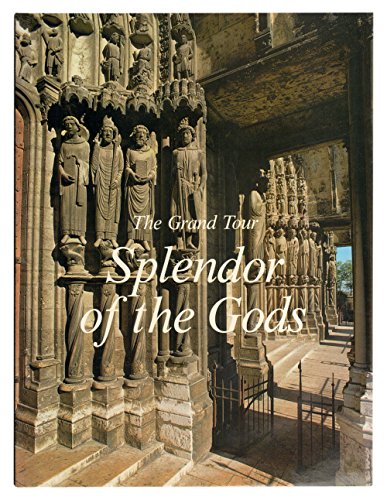
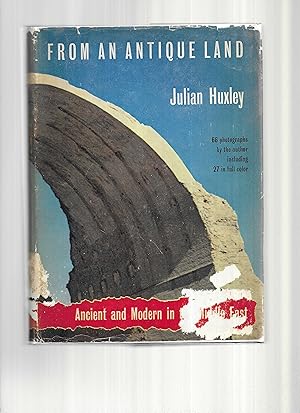
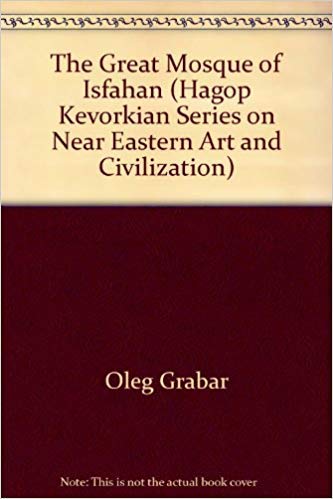

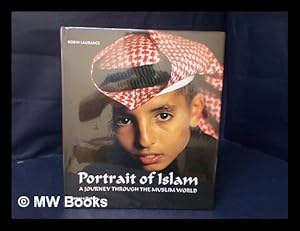

![Seller image for Oriental Manuscripts and Miniatures. [ Sotheby's, auction catalogue, sale date: 11 April, 1988 ]. for sale by Wykeham Books](https://pictures.abebooks.com/inventory/md/md31685803902.jpg)

